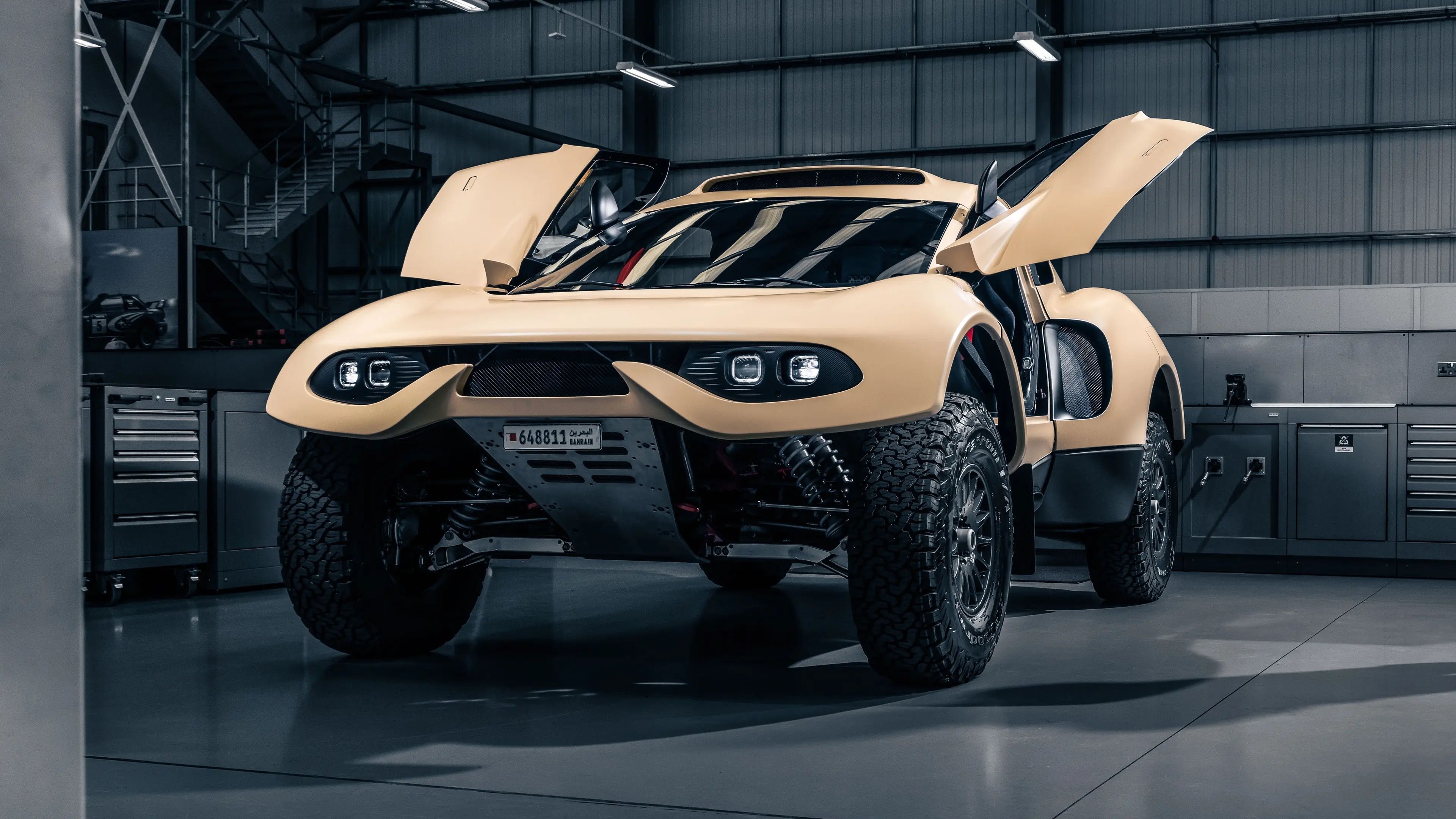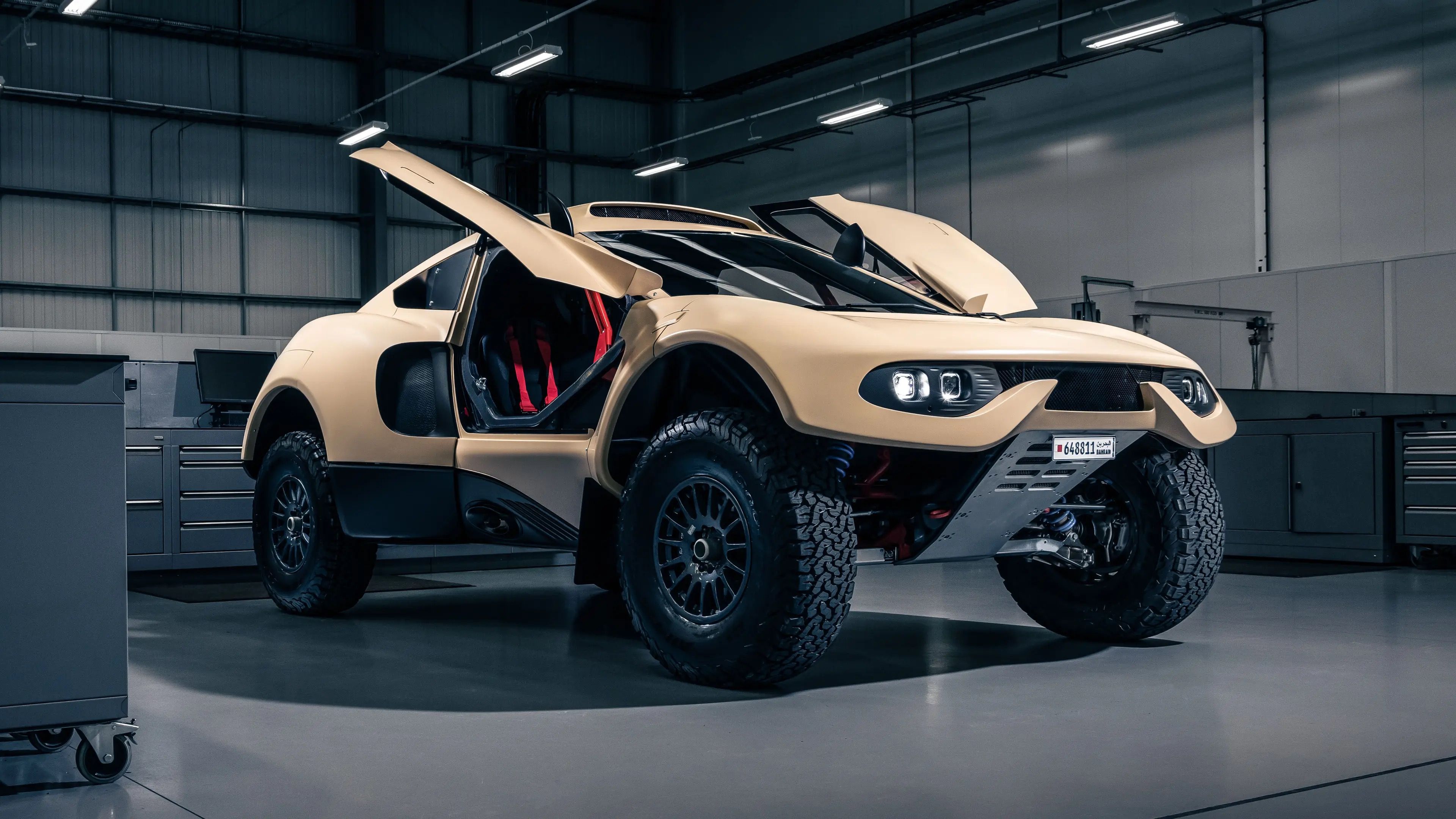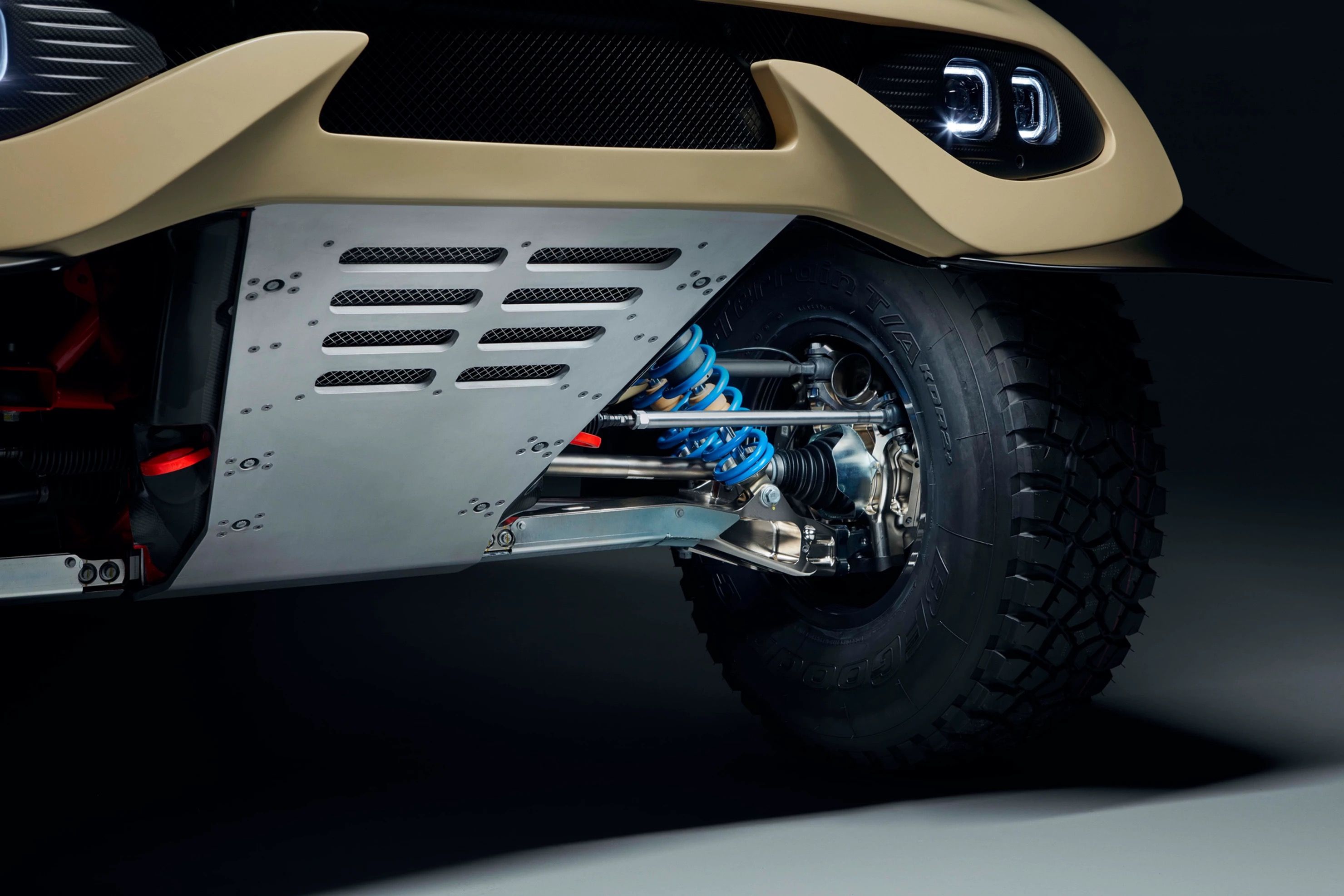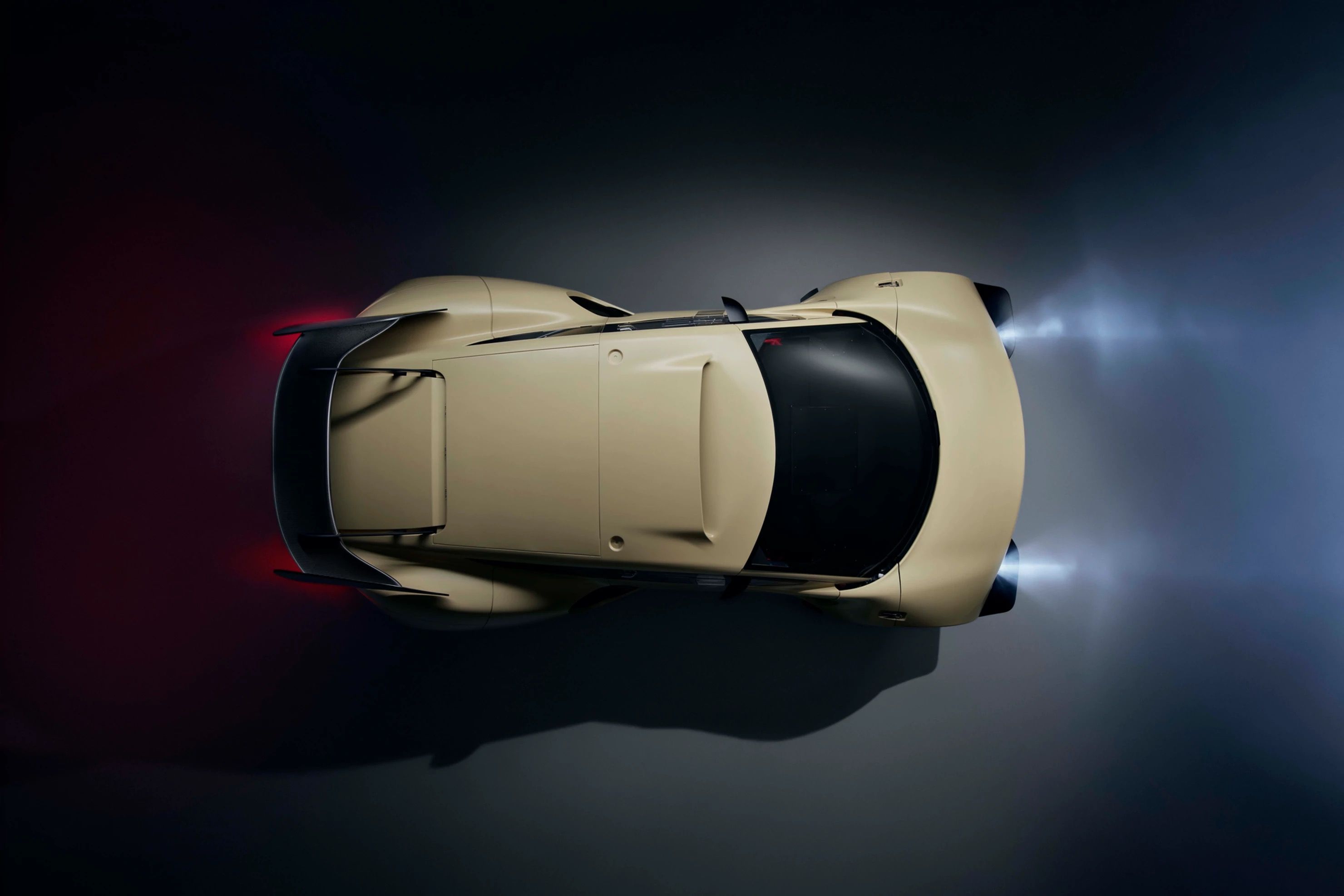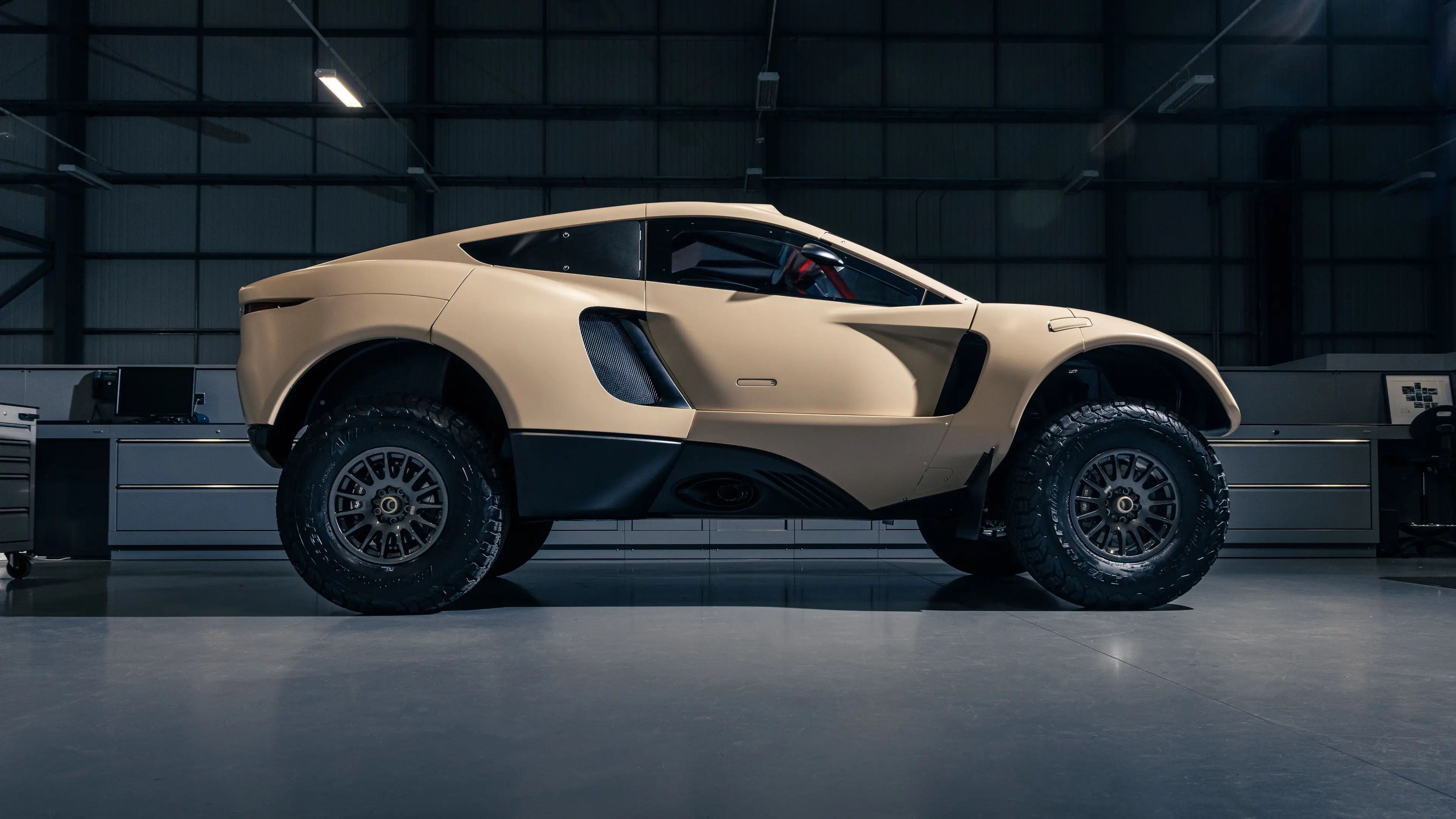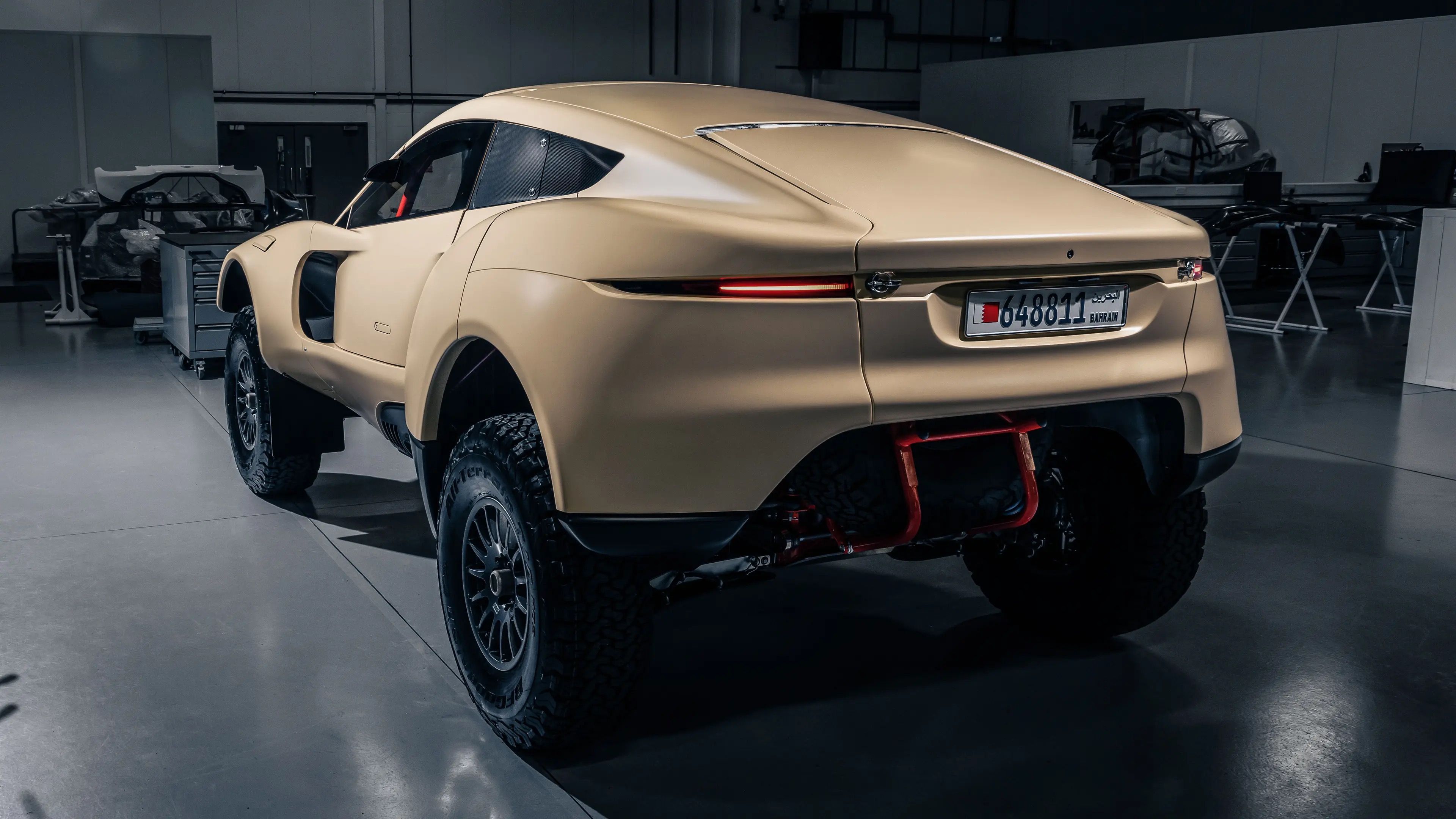It’s been a couple of years since we talked about the BRX Hunter, a model we described as the most extreme Dakar rally car ever built, and now the first of 25 road-going counterparts has been revealed. Known as the BRX Hunter T1, this first example is built for Bahrain’s Prince Salman Bin Hamad Al Khalifa and borrows so much from the Dakar rally car that it’s actually a little hard to tell the difference. Prodrive chairman, David Richards, previously called the Hunter T1 a “Ferrari of the desert,” and its sole purpose of existence is to be the fastest cross-country production car in the world.
The Prodrive Hunter BRX T1 – A Wild Machine
While the shared DNA between the road-going version of the BRX T1 and the rally version is downright obvious, there are actually dozens of differences between the two. Both do feature a body designed by Ian Callum, the former design boss of Jaguar, and the road-going version is 4,600 mm (181.10 inches) long and 2,300 mm (90.55 inches) wide. You can’t miss the aerodynamic fastback design and the large wing above the rear glass, which does generate excessive downforce, but one of the biggest differences is the height. The road-going T1 is just 1,850 mm (72.83 inches) tall, which makes it 100 mm or 3.93 inches lower than the rally model.
The T1 for the road does feature the same tubular steel spaceframe chassis that served as the bones in the three team cars that ran this year’s Dakar event. The road-going model has different tires and 17-inch wheels but does share the Prodrive-designed, ultra-long-travel twin-shock coil suspension in the front and rear. Air jacks are built into the body of the car for rapid tire changes – not a bad way to address issues related to desert running or more obscure areas where assistance isn’t exactly readily available. The engineer in charge of the T1 road car program, Mark Paterson, admits that most of the main specifications are shared between rally and road cars, but there are a lot of different details.
This is blatantly apparent inside, where the road cars get as much sound-deadening material as possible. The competition seats in the road cars have been replaced by seats that are a little more comfortable as well. The front fascia is also different and is designed to that the T1 is easier to drive by people with varying levels of skill and Prodrive will even give you a smaller fuel tank if you don’t want the 480-liter (126.8 gallon) tank that comes standard. Prodrive says it’s because “prospective owners are the kind of people who spend weekends driving in the desert and they may need a little luggage.” Personally, I’m thinking about the fuel bill on a 128-gallon tank, but that’s just me.
Powering this beast is a dry-sump, 3.5-liter, twin-turbo V-6 borrowed from Ford – the very same one found in the competition cars. The engine has been taken apart, modified, and rebuilt by Prodrive engineers, however, and is controlled by bespoke engine control systems. The T1 is a front-engined vehicle, but the engine sits as far to the center as possible, with the cover protruding some half a meter into the cockpit (think old conversion van style). This very engine is also more powerful, with the road cars making more than 600 horsepower and 516 pound-feet of torque – some 200 ponies more than FIA regulations allow on the thoroughbred rally cars. The engine in the road-going T1 also redlines at 6,500 rpm, or 1,000 rpm higher, but that’s because torque begins to decline above 5,500 rpm, which isn’t ideal for the competition models. Finally, power is sent to the wheels via a six-speed gearbox with paddle shifters. Permanent four-wheel drive is both standard and required.
As for straight-up performance, Prodrive says that T1 can hit 62 mph (100 km/h) in less than four seconds and will top out at nearly 186 mph, assumingly on a paved road, of course. As of now, the company only has a handful of people interested in buying one, but if you have the cheddar and are in the market for such a vehicle, you might want to reach out fast – there will only be 25 road-going cars built and once they’re gone, they’re gone for good unless you (probably) pay extra on the used market for one.

